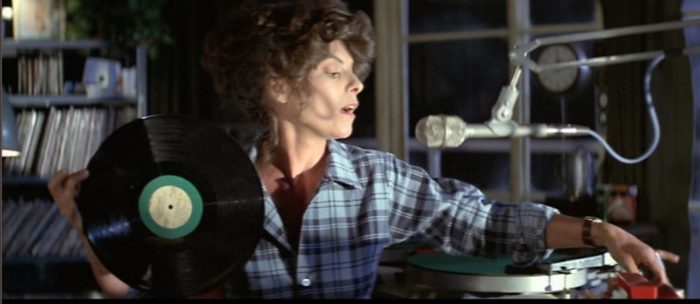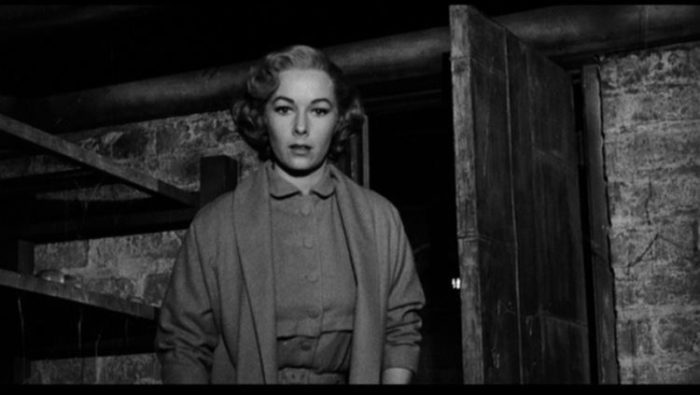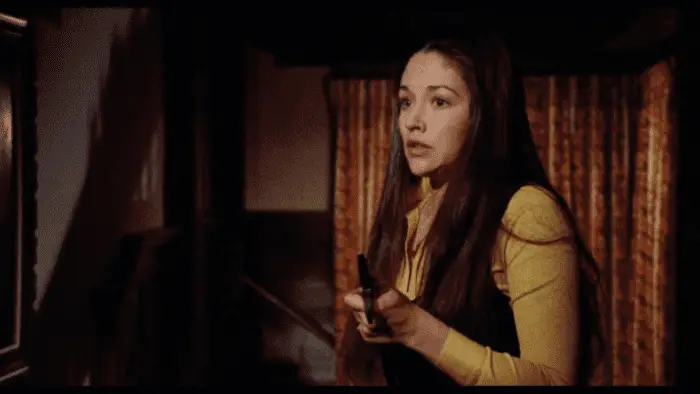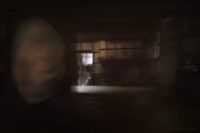It seems everywhere you look in horror fiction and fandom these days, the Final Girl is the buzz. Stephen Graham Jones’s brilliant novel, My Heart is a Chainsaw, features Jade, a protagonist who’s obsessed with Final Girls in the films she watches and the local events where she lives. Grady Hendrix’s latest novel, The Final Girl Support Group, trades explicitly on the term. Halloween Kills has returned to the big screen one of the Final Girl foundations, hearkening back to John Carpenter’s 1978 classic, Halloween. These are but the tip of the butcher knife, both in fiction and the reviews, blogs, memes, and critiques online.
But for every one hundred people who drop the term “Final Girl,” maybe one has ever read the origin text, Carol J. Clover’s 1992 book, Men, Women, and Chain Saws: Gender in the Modern Horror Film (M,W,&CS). Clover’s book is geared to film scholars as it leverages a range of fellow film theorists, psychoanalytic concepts by Sigmund Freud and Jacques Lacan, and gender theory by Judith Butler among others.
This article shares several of Clover’s provocative insights and arguments from the book. The idea is to add texture to what intellectually-curious non-academic horror obsessives can bring to screening and reading experiences of stories that include a Final Girl. And maybe some readers will be inspired to check out Clover’s book and work through its ideas for themselves.
Clover wrote about horror films—slashers, in particular, but also possession and revenge films. These subgenres exerted significant cultural force in the 1970s and ’80s but were not written about seriously by scholars or critics. Of course, Fangoria and other lesser-known publications are exceptions to this, but Clover was addressing a gap in consideration of the films in more broadly public intellectual spaces than those tailored directly for genre fans.
A question driving Clover’s study was: why did slashers consistently feature a female protagonist when the target (and actual) audience was predominantly male? This point of inquiry is the crux of the study. While most casual users of “Final Girl” in horror conversations can point to the behaviors that get other women killed along the film’s trajectory, what might not be well known is Clover’s sophisticated answer to the question.

Speaking of behaviors and characteristics, Clover articulated these with reference to milestone films like Halloween and The Texas Chainsaw Massacre as well as a broader data-set sensibility from screening and studying the category of films exhaustively. Through repetitions across the subgenre, including notables like Laurie Strode, Clover articulated being an androgyne as a key feature of the Final Girl. This was linked to sexual naivete and/or anxiety. It was also linked to character names, voices, and work. Clover notes that multiple characters are radio disc jockeys. The extended example in the book is Stretch from The Texas Chainsaw Massacre 2 (1986), though I much prefer Clover’s secondary example, Carpenter’s The Fog (1980). The vocal performance of the live-radio DJ by Adrienne Barbeau is a total force. Clover also highlights the watchful detective gaze of the Final Girl. While the other characters in the films, regardless of gender, live carefree—or rather, careless—lives amidst the horror, the Final Girl observes and investigates to the degree that she may come across as watchful to the point of paranoia.
Clover further defines the Final Girl as an innovation that radically shifts away from Alfred Hithcock’s seminal 1960 film, Psycho. True enough, Psycho centers on identification across gender, yet the narrative aligns spectators with Norman Bates. The end of the film reinforces identification with Norman as his entanglement with Mother is diagnosed. With slashers of the ’70s and ’80s, Laurie Strode has displaced Norman Bates and inverted the gendered figure with whom the audience eventually and ultimately identifies. Even as Clover marks the shift from Psycho, M,W,&CS says Lila Crane is a bit like a proto-Final Girl. It’s Lila, after all, who has the fortitude to enter the Bates home, particularly the basement, which is a slasher space Clover labels the Terrible Tunnel. And it’s Lila who faces down Norman/Mother; though, like Laurie Strode, she’s aided at the last minute by a man.
While Psycho exemplified a horror plot driven by detection and a stunning revelation, Halloween and other Final Girl slashers turn towards horror plotting of women heroes fighting evil.

Boys also die in slashers. M,W,&CS triangulates the Final Girl with the fact that men in slashers die, too. The pattern Clover notes is that these men often die by surprise, quickly, and at times entirely off-screen. Unlike the women—each Final Girl and the women who preceded her in the story—the men are not subject to terror-inducing pursuits and prolonged, often torturous murders.
This pattern adds a vital piece to the puzzle of women protagonists for male audiences because it suggests that most male characters in slashers, with the exceptions of “feminine male” killers, are excluded as figures for spectator identification. Significantly, Clover also excludes the slasher himself from being a figure of identification beyond the first part of these films. Film scholar Carter Soles has raised significant questions, though, around the fandoms that have arisen around Jason Voorhees and Freddy Krueger, for instance. Perhaps such fandoms point to something Clover claimed at the time M,W,&CS was published: that the gender revolutionary prospect of the slasher had already diminished if not passed by the early 1990s. The Final Girl is the hero of the film, so she, and not Michael Myers or the others of his ilk, is who the cinema-goers cheer for and connect with. This puts a challenge to the idea that slashers play strictly or predominantly to male sadism. The answer to Clover’s key question isn’t that simple.
M,W,&CS notes that some Final Girls dispatch the slasher themselves, and others are aided, one might even say in scare-quotes “rescued,” at the last minute by a man. But Clover suggests this distinction can be a distraction from the pressing facts of the Final Girl discovering the horror unfolding and then confronting, often innovatively in a dire pinch, the killer directly. Even when someone else, like Loomis in Halloween, steps in to finish the slasher off (or not quite, dun dun dun!), it is the Final Girl who overcame the threats and associated shock and terror.
As a note on affect, the original study maps audience reactions to slasher sequences by noting how people are silent when watching the stalking sequences (including the I-cam shots that represent the killer’s subjective focalization), scream with fright during the actual slashings, and groan with revulsion when the ensuing mutilations are shown on screen. Mapping the order of emotional reactions to the sequences that recur brings into view how, why, and what these films convey to their audiences.
Then, as Clover builds towards the answer, gender fluidity and identification take center stage. And in this sense, the book pretty remarkably anticipated gender conversations as they are figured today. For example:
What filmmakers seem to know better than film critics is that gender is less a wall than a permeable membrane. No one who has read “Red Riding Hood” to a small boy or attended a viewing of, say, Deliverance (an all-male story that women find as gripping as men do)—or, more recently, Alien and Aliens, whose space-age female Rambo, herself a Final Girl, male viewers seem to engage with ease—can doubt the phenomenon of cross-gender identification. [1]
Just pages after this statement, Clover quotes Carpenter in order to hold up his insights and identify his oversights:
To the critics’ objection that Halloween in effect punished female sexuality, director John Carpenter responded: ‘They [the critics] completely missed the boat there, I think. Because if you turn it around, the one girl who is the most sexually uptight just keeps stabbing the guy with a long knife. She’s the most sexually frustrated. She’s the one that killed him. Not because she’s a virgin but because all that repressed energy starts coming out. She uses all those phallic symbols on the guy…She and the killer have a certain link: sexual repression.’ [2]
The book complicates Carpenter’s conclusion, but it reinforces his resistance to the reductive reading of the Final Girl as a figure of men punishing female sexuality. That’s not what compels the audience in Clover’s or Carpenter’s views.
In pulling Freud’s theories into the discussion, Clover cleverly wonders how his work might have been affected if he’d had access to 40 slasher films in place of the fictional works he used for examples in writings like “The Uncanny.”

While invoking and interrogating Freud’s notions, Clover writes, “The ‘play of pronoun function’ that underlies and defines the cinefantastic is nowhere more richly manifested than in the slasher; if the genre has an aesthetic base, it is exactly that of a visual identity game.” To illustrate the point, the opening of Halloween is presented with its structure of suspended identity—a device that Carter Soles notes predated Halloween in the 1974 slasher Black Christmas. We don’t know who we’re identifying with in the story world until after the initial kill. The structure establishes uncertainty about identity as a baseline that continues across many of the films with a Final Girl. The more surprising uncertainty at play in Friday the 13th is added to the mix to show how the play of pronouns is integral to the slasher yet in diverse ways.
When we skip ahead to the final chapter of this Final Girl book, Clover forwards the notion of “feminine masochism” to address the opening question about the preponderance of Final Girls in slashers that are made for mostly male-identifying consumers. In Freud, “feminine masochism” labels, not masochism in women, but masochistic perversion in men. The concept is predicated upon what Clover calls “Freud’s abiding interest in a kind of bedrock bisexuality.” [3]
The application of “feminine masochism” to Final Girl films means that the narratives are organized around being and bodies that do not possess or maintain a stable interior identity, particularly in a gender binary system. Rather, as Clover puts it, “the excitement is precisely predicated on the undecidability or both-andness or one-sexness of the construction.” [4]
The pleasures and pains of gender fluidity come alive in Final Girl narratives, at least for male audiences. The answer does not purify the horror subgenre. Instead, it limns the outlines of gender concepts and fluidities across time and the genres that shape and are shaped by cultures.
For a final Final Girl note, a passage near the very end of the book addresses the more conventional gendering that bookends many slasher films. Yes, M,W,&CS claims, the opening and closing sequences may frequently try to contain their stories and package them for gender-comfortable consumption. However, the sustained film time dedicated to the Final Girl’s heroic actions and the affective intensity bundled with this transcend any attempts to close gender fluidity down again.
If you’re intrigued, check out the book and/or take some of the ideas shared here to your next screening or reading of a Final Girl slasher.
References
[1] Clover, Carol J. (1992). Men, Women, and Chain Saws.London: British Film Institute. p.46
[2] p.48-49
[3] p.215
[4] p.217
Looking for more theory on final girls? We’ve got you:
“The Emergence of the Anti-Final Girl”



I need to clarify/enhance one of my comments glossed here, the bit (around paragraph 10) about sympathy for/popularity of slasher killer characters like Freddy Kreuger. On that specific issue, I must acknowledge my collaborative work with Kom Kunyosying in this Horror Homeroom piece:
http://www.horrorhomeroom.com/jason-voorhees-as-backwoods-berserker/
It is my fault for forgetting to mention Kom or that specific piece at the time I responded to Andy with those ideas. My apologies to Kom for my belated acknowledgement of his contribution and I hope the linked piece is of some interest to readers of Horror Obsessive.